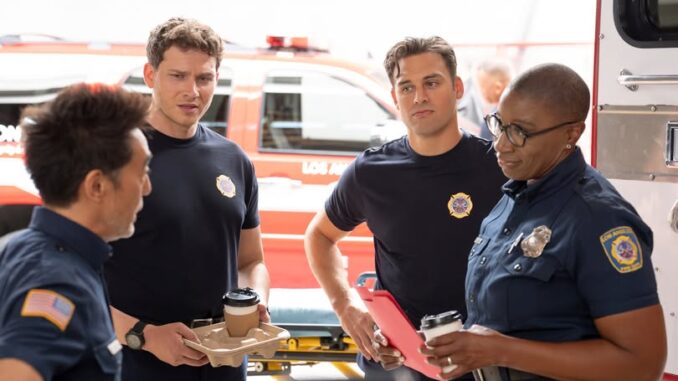
Imagine this: you just learned you’ve scored a plus-one pass to the most epic journey ever. Whether it’s a wild safari, a remote island escape, or an adrenaline-packed trek across continents — you get to bring one special person. But who should you choose? Let’s dive into how to pick the perfect partner for your once-in-a-lifetime experience.
Why the Plus-One Matters More Than You Think
It’s More than company — it shapes your story
Your travel companion becomes part of the memory. Fifty years from now you won’t recall the hotel’s decor — you’ll recall who was laughing beside you when you glimpsed a lion or got drenched in a waterfall. That person becomes a co-author of your epic memories.
Travel compatibility can make or break the trip
You might be surprised — even your best friend or partner might struggle on a rugged adventure. Diverging priorities, pace differences, sleep schedules — all those little things magnify when you’re far from home.
Key Qualities to Look for in Your Plus-One
Shared Sense of Adventure
You don’t need a professional mountaineer — just someone who leans toward “yes” more than “no.” The person should be game to try new foods, stray off the beaten path, get lost in cities, and embrace spontaneity.
Emotional Resilience
Trips can go wrong. Flights get canceled, weather shifts, plans fail. Your plus-one must be someone who stays calm, adapts, and laughs through chaos rather than collapsing in despair.
Physical Compatibility
Not everyone needs to be an athlete, but if you plan on hiking, diving, or trekking, your companion should match at least part of that energy—or accept doing “lighter” portions without complaint.
Complementary Strengths
Maybe you excel at planning and logistics. Maybe your plus-one is the social connector who strikes up conversations with locals. When your strengths complement one another, you fill gaps and reinforce the journey.
Trust and Communication
In unfamiliar places, you’ll rely on one another’s judgment. You need someone you trust implicitly, who communicates openly and can talk through stress, disappointment, or fear.
Red Flags — When Someone Isn’t Fit to Be Your Plus-One
Constant complaining or negativity
If every hiccup sparks irritation or blame, that energy is contagious. Travel challenges will come — you don’t want someone who turns every twist into a catastrophe.
Inflexibility or rigidness
If they hate schedule changes or can’t roll with the unexpected, forget about bringing them to a remote mountain or jungle where structure dissolves.
Disinterest in your goals
If your ideal trip involves history, wildlife, or cultural immersion — but your potential plus-one yawns at museums — that disconnect might breed resentment on your journey.
Poor money habits or stress around spending
If they panic at cost overruns or insist on constant “comfort” upgrades, the financial friction will overshadow the joy.
Types of Plus-Ones — Who Fits What Trip
The Best Friend
Pros: you know each other’s rhythms, inside jokes, boundaries.
Cons: familiarity might breed taken-for-granted behavior or lack of novelty.
The Romantic Partner
Pros: deep emotional bond, great for dating an adventure.
Cons: romantic friction magnifies in stress; fights feel heavier in wilderness.
The Sibling or Family Member
Pros: built-in trust, shared history, sometimes fewer romantic tensions.
Cons: old sibling rivalries might reemerge under strain.
The Wildcard — A New but Trusted Friend
Pros: fresh energy, blank canvas, fewer past baggage.
Cons: less proven under pressure, trust has to be established quickly.
Choosing Based on Trip Type
For High-Adrenaline Adventures (Climbing, Rafting, Expeditions)
You want someone physically up for it who enjoys risk. You also want someone calm under pressure, with basic survival instincts or openness to learn.
For Cultural or Immersive Trips
You want a curious mind, someone who isn’t deterred by language barriers, slow travel, local food, or being off-grid. They should revel in connection more than comfort.
For Remote or Offbeat Journeys
You’ll need resilience, flexibility, and a tolerance for uncertainty. Your plus-one should be comfortable without constant creature comforts, fine with rustic accommodations and long travel legs.
For Luxury & Relaxation
Here, the ideal partner is someone who appreciates pampering, spontaneity tempered by comfort, and can balance leisure with exploration.
The Selection Process — How to Decide Wisely
Short Trips as Trials
Try a weekend camping, road trip, or adventure together. Notice how your companion handles logistics, fatigue, frustration, and excitement. Think of it as a “test run.”
Talk It All Out
Discuss expectations: daily pace, budget, meals, alone time, communication. If your vision doesn’t align, that mismatch will echo on the big trip.
Consider Solo vs. Duo Balance
Maybe you two don’t need to be inseparable every moment. Allowing micro solo time can reduce friction — each person can retreat, recharge, or explore individually.
Contingency Planning
Pick someone who, if separated temporarily (lost luggage, illness, diverging legs), can handle hardship alone — or at least partner with locals or get help if needed.
Real Life Scenarios & Examples
Safari with a Sister vs Partner
Your sister might know your quirks — and tolerate your unpredictability. A partner might feel anxious about missing romance time or getting injured. Choose the energy that fits your safari pace.
Trekking with a Best Friend vs a New Acquaintance
Your longtime friend knows your limits; but a bold new friend might push you further than you ever dared. The first is comfortable, the second transformative.
Tips to Nourish the Plus-One Dynamic
Build Rituals
Have small rituals: morning tea, evening story-sharing, or a nightly walk. These mini routines anchor connection and relieve stress.
Embrace Shared Goals — and Individual Goals
Set at least one shared “must-see” for the trip. Also let each person have their own mini wish (e.g., you want sunrise on a mountain, they want a cooking class).
Stay Playful
Bring games, jokes, dares, photo scavenger hunts. Playfulness lubricates tension, eases fatigue, and keeps enthusiasm alive.
Communicate Early and Often
Notice irritations as seeds. If one feels worn out or resentful, talk it out before it magnifies. It’s not “you’re wrong”; it’s “I need rest or shift.”
Respect Boundaries
If your plus-one needs quiet time, let them have it. If they need to skip a strenuous day, let them rest. Respect creates safety.

What If You’re Tempted to Go Solo?
The Freedom Factor
Solo travel gives full control over pace, destination, and daily whims. No compromises. No second guessing. But that can be lonely.
The Drawbacks of Going Alone
You won’t have someone to share awe, shoulder burdens, or debrief nightly. Hard moments feel heavier when you’re by yourself.
Hybrid Approach
You can start solo and have “plus-one days” where you reconnect with someone. Or you can be with others for the difficult sections and solo for the rest.
Crafting the Story You’ll Tell
It’s About Growth, Not Just Sightseeing
The real value of an adventure lies in transformation — courage, empathy, resilience. The companion you choose will witness and shape that growth.
The Narrative You’ll Share
Years later the headline won’t be “We visited X country.” It’ll be “We faced a storm, got lost, and survived it — together.” Choose someone who’ll hold that narrative with you.
Conclusion
So here’s the truth: selecting your plus-one for a once-in-a-lifetime adventure isn’t about finding someone perfect — it’s about choosing someone compatible, communicative, resilient, and eager to plunge into the unknown by your side. Whether it’s your best friend, a sibling, your partner, or a fresh companion, the right choice will amplify joy, soften hardship, and enrich every moment. Adventure becomes a story you both tell — inseparable, unforgettable.
